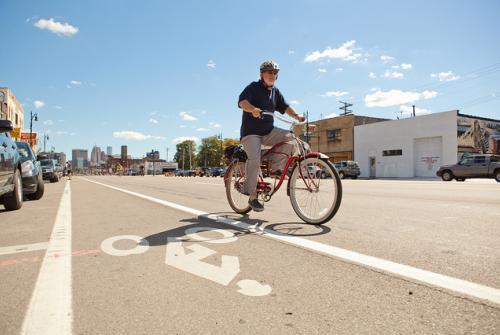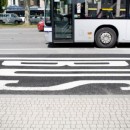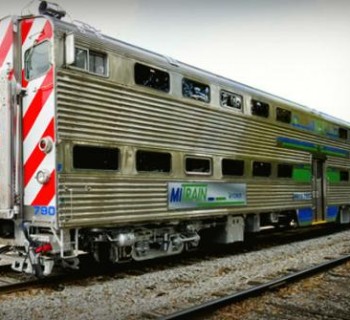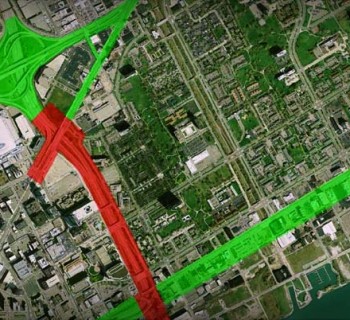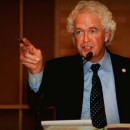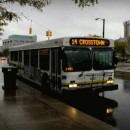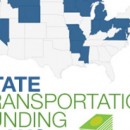I-375, the primary access point to Detroit’s downtown district, entertainment venues, residential neighbors and the East Riverfront, will undergo a major facelift in the future, and the Michigan Department of Transportation (MDOT), Detroit RiverFront Conservancy (DRFC) and the City of Detroit’s Downtown Development Authority (DDA) want your feedback.
As Detroit’s community continues to evolve, it is clear that the current I-375 may not be the best gateway into the Downtown district. Rather than just updating the existing route, the I-375 Alternatives Project has collected six alternative proposals developed by the City of Detroit, MDOT, the Southeast Michigan Council of Governments, highway officials and other engineering consultants. The project partners hope to evaluate each proposal and understand which option will best serve Detroit’s evolving landscape. View each proposal here.
Earlier in the year, Mode Shift asked our readers what they thought the removal of I-375 would impact the most. Fifty-eight percent of respondents chose “Removing I-375 will reconnect communities/increase walkability.” Five of the six alternative proposals include the removal of I-375 and prioritize pedestrian and bike pathways.
Interestingly enough, proposals two through six cost significantly less than proposal one, which suggests a rebuild of I-375 as is, and proposals two through six also include routes that allow for pedestrian and cyclist traffic. Each proposal is not without trade offs, however, and a team of planners will evaluate each option for possible consequences to downtown development, residential usage and traffic congestion.
Todd Scott, Detroit Greenways Coordinator and avid cyclist calls for active transportation-friendly improvements to the proposals:
“It’s important to understand how we improve biking and walking down the corridor, as well as across it. It’s a big moat that separates the downtown area from the surrounding community. Some of the options do a good job of bridging the moat, but improvements are needed to improve the safety of walking and biking. I’m pushing for more advanced bike lane designs on alternative proposals. Some of the proposals include one-way bike lanes, which isn’t the best option for bicyclists. The proposals need to offer bike lanes that allow for two-way traffic,” said Scott.
The Detroit Greenways Coalition has examined all six proposals and has prepared a list of comments and recommendations for each, which focus on improving ease of access for active transportation modes, including:
- All reconstructed streets and bridges should be designed as COMPLETE STREETS per the MDOT policy [to accommodate walking and biking, among other modes of travel]. Many of the streets in these proposals, but especially those in Alternative 1, are not designed to safely accommodate bicyclists.
- Given the number of intersections, shared side paths are not an appropriate design for bicyclists. They would be less safe than bike lanes.
- Traffic calming should be employed to transition motorists from freeway speeds to appropriate surface street speeds.
A complete summary of the Coalition’s feedback on the alternative options can be found here.
The study will end in September of 2014, and the final recommendation will be announced at the end of summer or beginning of fall. Regardless of which proposal is chosen, MDOT will be the architect of the project.
Community members can engage in the process by attending planned public meetings or submitting feedback via email at I375detroit@degc.org.
What do you envision for I-375’s future? Which proposal do you like best? What improvements would you make to the proposals?


